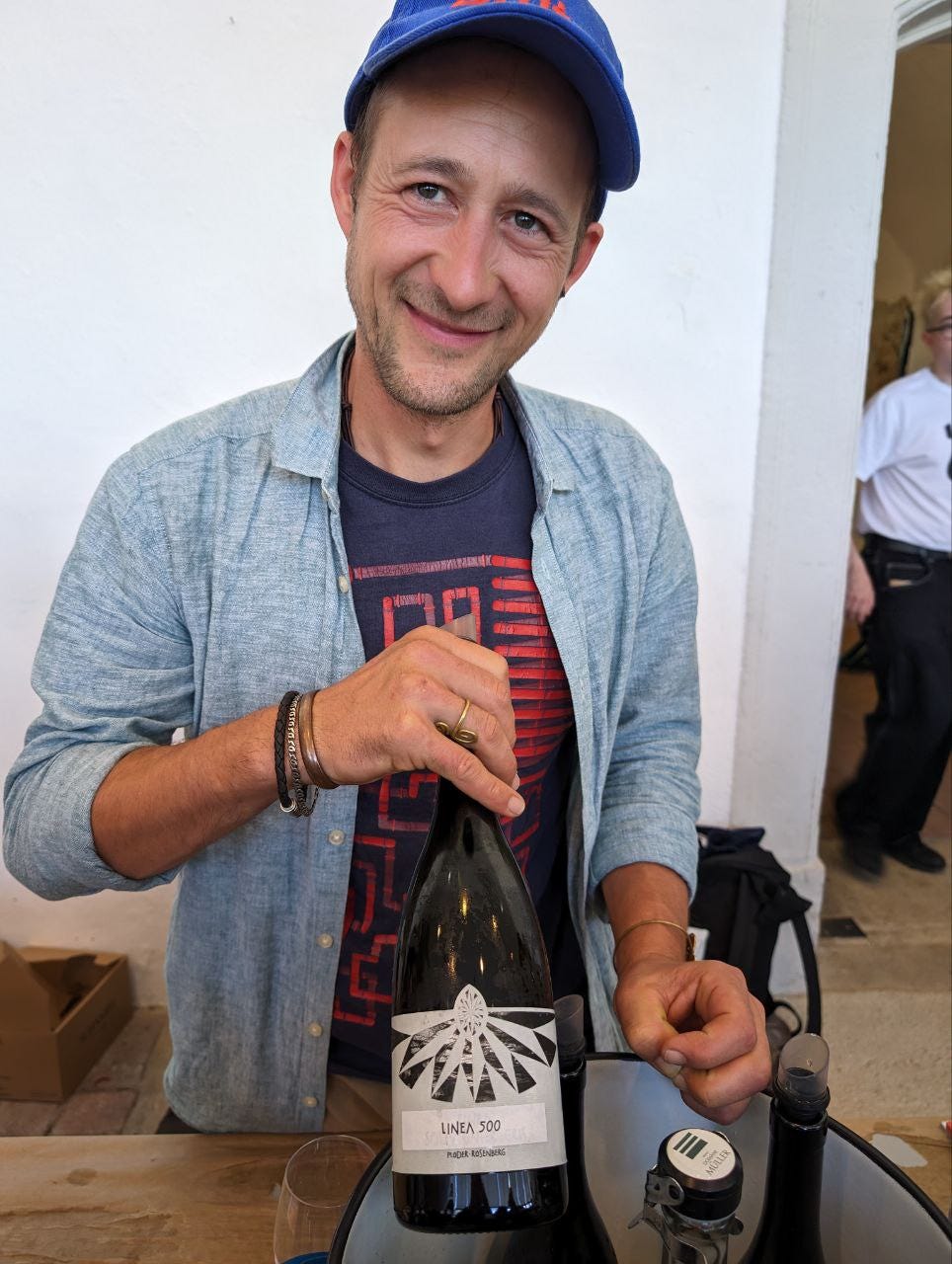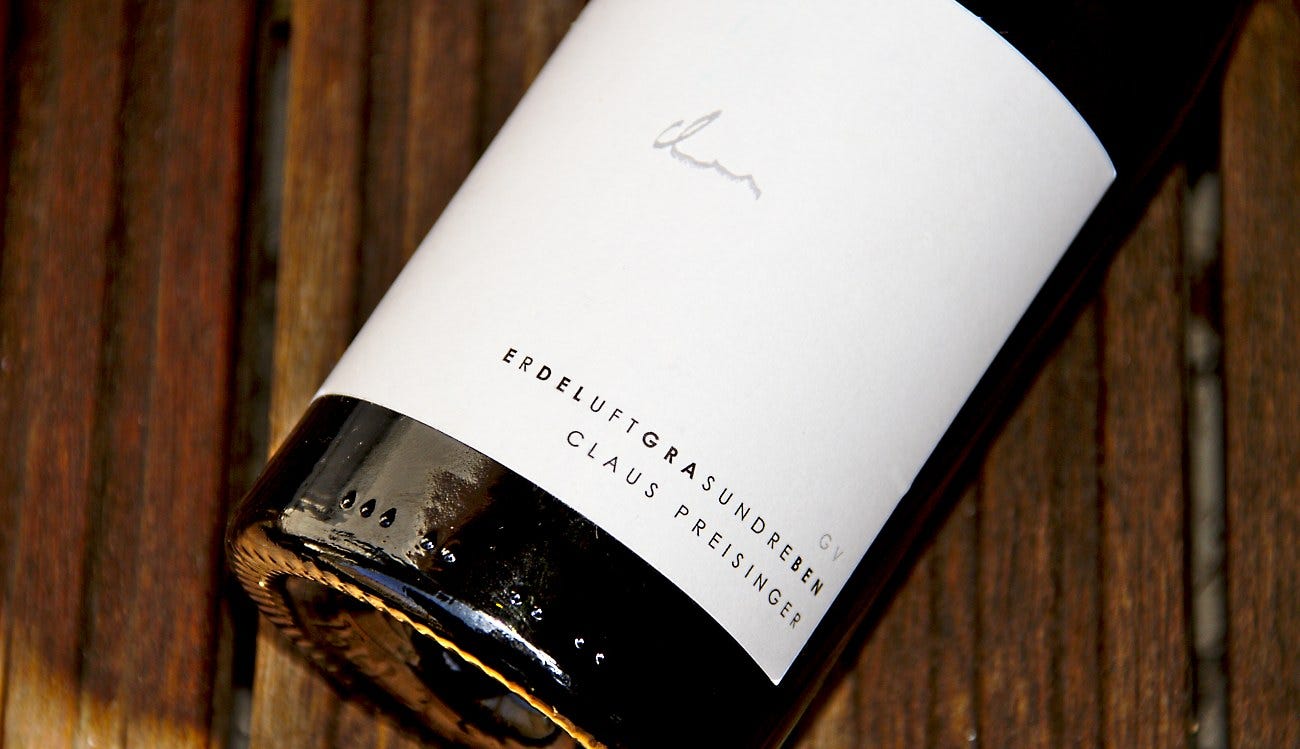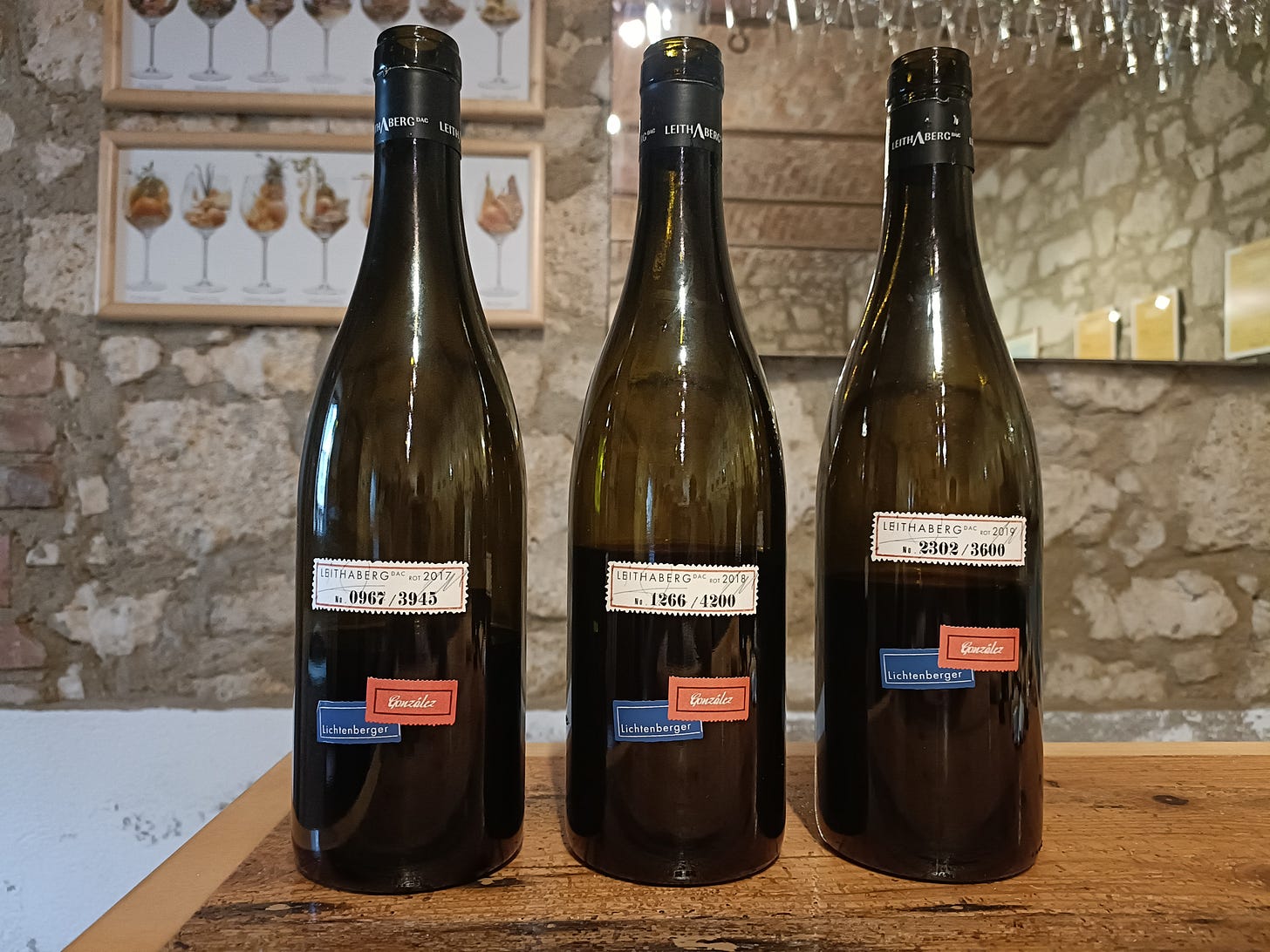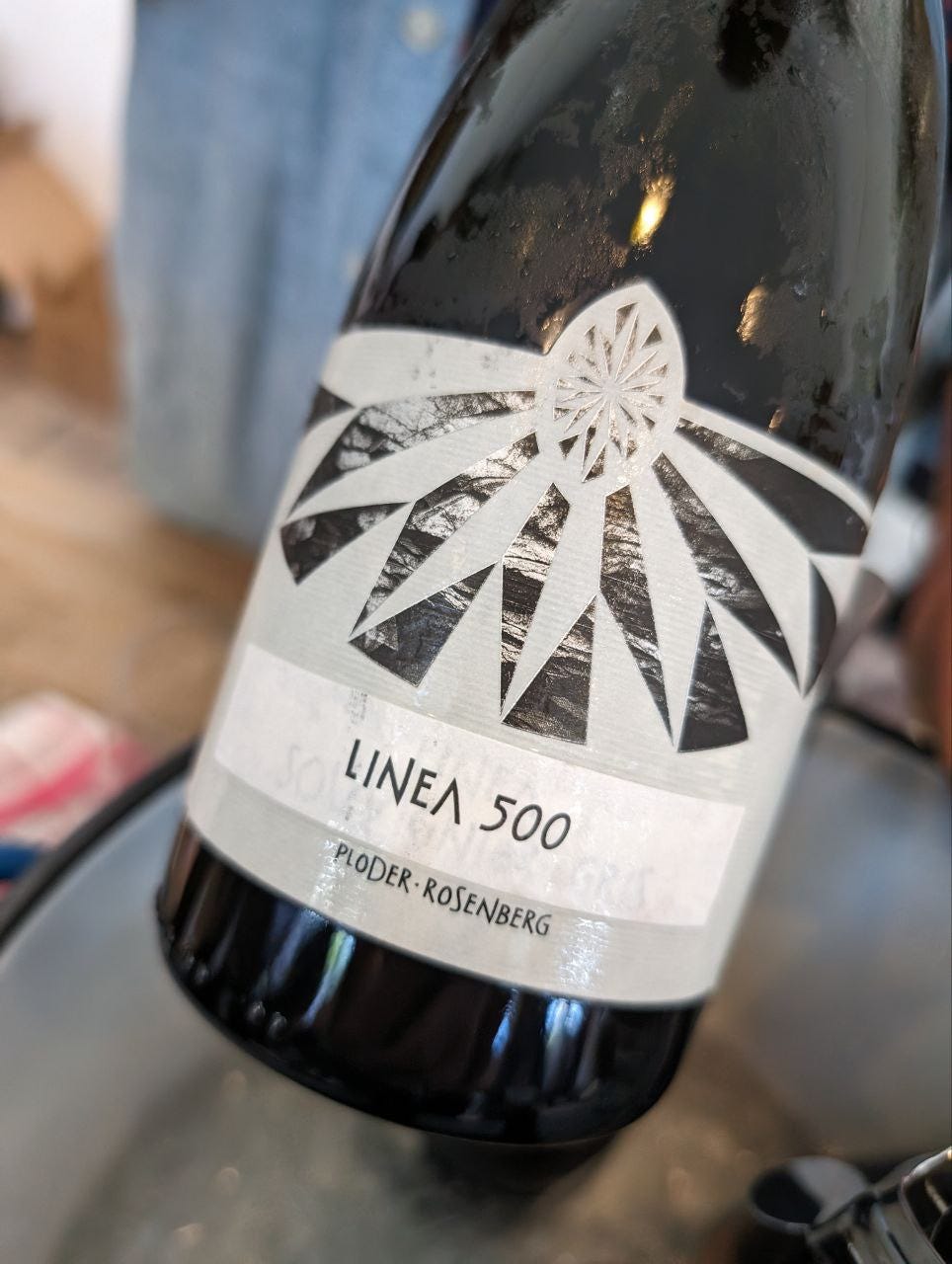Austria's Love Hate Relationship with Natural Wine
Despite its flush of iconic growers, Austria's bureaucracy still hasn't figured out a solution to incorporate their output
To many of us, Austria seems like a natural wine paradise. It is, after all, Rudolf Steiner’s birthplace and the nation that fostered biodynamic agriculture. It boasts the highest proportion of certified organic farmland (including vineyards) in Europe (27.7%), more than double France’s measly 10%. Then there’s the roll-call of natural wine superstars: Claus Preisinger, Christian Tschida, Gut Oggau, Judith Beck, Renner and Sistas, Meinklang, Franz Weninger, Sepp Muster, Werlitsch, Andreas Tscheppe, Franz Strohmeier, Karl Schnabel, Ploder Rosenberg. The list goes on and on and on.
The entire country’s total wine production is less than that of Bordeaux, yet the roster of Austrian growers at this year’s Karakterre gets close to 100. Not only is Austria swimming in natural wine, with new names popping up like mushrooms, it also boasts one of the most recognisable stylistic signatures. Austria’s natural wines are frequently fresh, light and energetic, focusing on fruit purity and elegance.
There’s more: The country’s generic body, the Austrian Wine Marketing Board (ÖWM), is receptive to the natural wine sector, promoting it as an equal, not a lower quality citizen as is often the case in classic wine countries such as France, Italy or Spain. There’s the famous category 8. “Alternative wine”, into which the ÖWM places heavily macerated orange wines, cloudy whites or anything else that doesn’t fit into a more mainstream box. Austria’s wine laws were amended in 2018 to allow for more ‘non-standard’ wines placed in the table wine category to also show vintage and grape variety.
So what’s the issue? Many of Austria’s leading natural growers lock horns (unwillingly) with the authorities year after year. The moving target of what is tolerated in terms of wine labelling, and the decision about whether to apply for Austria’s quality wine designation are the touch points. Growers sometimes face massive costs to try to get their wine approved by regional tasting panels, or risks that their wines are not even cleared for export or sale.
I first realised that something was wrong in May 2023 when I bumped into Manuel Ploder, winemaker at his family’s Demeter-certified winery Ploder-Rosenberg, located in Southern Styria. We shared a few glasses in the courtyard at Gut Oggau and the conversation quickly turned to the very serious issues he was facing trying to get his 2019 vintage ready for sale. Manuel bottled and labelled the wines in autumn 2022, declassifying everything down to Steierland– Styria’s table wine category - as he has done for years. He took advantage of the 2018 legislation allowing grape variety and vintage to be started, on wines including Linea Sauvignon Blanc and Linea Souvignier Gris.
Then in December 2022, The Bundeskellereiinspektion (a branch of the Austrian ministry of agriculture which regulates winemaking) informed Manuel that his cellar had been selected for an inspection. The Bundeskellereiinspektion enforces wine regulations and works with producers to uphold quality standards. They work closely with local teams of inspectors.
Manuel explained to me that such inspections, invariably advised randomly and at short notice, follow a predictable pattern. “They look for volatile acid that is on the border [of what is legally allowed], then if that is OK, they look for mistakes on the label.” The inspector selected several of the 2019 wines for further analysis and took samples. The winery is then obligated to pay €450 per wine analysis. Manuel had the distinct impression that the inspector was looking for a way to catch him out.
Wines selected for analysis are tasted by a team of 12, who assess via a simple three-tier structure:
Does the wine fit in the quality category that the winemaker has chosen for the label? (For example, a specific DAC, or a broader quality wine appellation).
If not, does it fit in the category below?
If the answer to question 2 is also no, does the wine have a fault?
Since Manuel already bottles in the lowest possible category, the theoretical possibility would be that his wines were declared totally unacceptable for sale or export. But none of his wines had overly high levels of volatile acidity, or any other obvious faults. The tasting panel’s feedback was that the wines were not typical of the grape variety or the year. Manuel smiles when he remarks that “they said my Souvignier Gris was not typical”. Souvignier Gris is a disease-resistant crossing (a PIWI) that was created in the 1990s. One taster wrote “natural wine style” as their answer to question 3. Manuel’s entry level blend of three PIWI varieties “Cara 2019” was deemed to be “not typical of Cara 2019”.
The commission stopped short of asking Manuel to destroy his bottles or remove them from sale. They ordered him to relabel five wines (10,000 bottles in total), removing any mention of grape variety or year on the labels. He found a solution by affixing stickers to cover the offending pieces of information. I tasted a bottle of the Linea Sauvignon Blanc, renamed Linea 501 (in homage to one of the biodynamic preparations), in March 2023. The wine was nothing less than stunning, with a sumptuous, leesy texture, incredible energy and concentration and elements that I consider to be typical of skin fermented Sauvignon Blanc from Steiermark: dried sage, citrus oils and candied peel. At the time, I had no idea about the label’s tortured history.
The Bundeskellereiinspektion didn’t just clamp down on Ploder-Rosenberg. That same winter, they went after many well known natural winemakers. Claus Preisinger, Karl Schnabel, Franz Strohmeier and Christoph Hoch were some of the others targeted with similar ‘random’ inspections. Preisinger had his wrists slapped for his Grüner Veltliner ErDELuftGRAsundreBEN - a tortured name where the bolded characters spell out the single vineyard’s name: a detail not allowed on bottles of table wine. From 2023 onwards, the bold characters have been removed to assuage the wrath of the WBP.
Listening to Manuel Ploder’s story, and others like it, I struggled to understand the objective of the Bundeskellereiinspektion (or their lords and masters). Why penalise winemakers who already have a global name? Ploder-Rosenberg’s wines are hardly dirty, faulty swamp-juice that would reflect badly on Austrian wine in general - quite the opposite.
Winemakers such as Ploder and his colleagues attribute the problems to jealousy or conservatism on the part of the Bundeskellereiinspektion’s employees and inspectors. Retired winemakers, usually from more mainstream backgrounds, make up the core of their tasting panels and there is perceived animosity between the ‘old guard’ and younger winemakers who now sell their declassified wines at significantly higher prices on export markets. Ploder posits a more radical, philosophical idea: “I think they are afraid. They see that this [natural wine] movement wants social changes.”
I sat down with Johannes Schmuckenschlager, president of the Österreichischer Weinbauverband (the national winemaker’s association) in November 2023 to get some answers. Schmuckenschlager is a politician, but also comes from a winemaking family. He’s lead the ÖWV for a decade. He explained to me that “Because of the scandal, we’re still rather strict”. He refers to the spectre of the 1985 wine scandal, when several Austrian wineries were found adulterating wine with a potentially poisonous chemical. It was a defining moment that changed Austrian wine for good - many would say for better.
Schmuckenschlager cautiously admitted that “we need to build more understanding. We need to develop with this new sector and not be religious about it.” He adds that “there are always things that we’re not prepared for.” He gives the example of famed Burgenland winemaker Kollwentz, who was one of the first in the 1980s to start focusing on barrique-aged red wines. Kollwentz lost the appellation and had to declassify to table wine for a few years, because the style at the time was for fresh, fruity wines matured in steel tanks.
Much of Austria’s wine regulatory apparatus was created after 1985, including the iconic banderole. This is the colours of the Austria flag, printed either on the screwcap or the capsule of the bottle. To be allowed to carry this distinctive mark, wines have to attain the prüfnummer, Austria’s quality wine designation. And this is where many of the problems start.
Each region in Austria has its own tasting committee, and producers submit their wines to the committee - assuming they want to bottle and label with the banderole and not just as table wine. But most committees routinely reject any wine which is obviously unfiltered, hazy or with other non-traditional attributes such as obvious skin maceration. Stories abound from growers such as Alvin Jurtschitsch or Alexander Zahel, both of whom farm biodynamically and whom passionately believe that the best wine should never be filtered or fined. Both regularly resubmit their wines to tasting committees, sometimes multiple times, not specifically for the right to use the banderole but because without the prüfnummer there is no possibility to write the region or the vineyard name on the label: a detail they both feel is important.
Zahel told me about a wine that he resubmitted 10 times, each time paying a three figure sum for the privilege, before he was able to get it passed. He, Jurtschitsch and others have to use a number of different tactics: submitting multiple wines in a row, so that the tasting panel '“gets used” to their less familiar style, bottling from the top of the tank so that the wine has no fine lees and no risk of haziness and so on.
Many well-known organic, biodynamic and natural wines growers have abandoned applying for the prüfnummer. Some of the latest include Franz Weninger and Lichtenberger-Gonzales. Michael Wenzel, based in Rust, admits that it hurts when your wine is repeatedly rejected. “Why put yourself through that experience?” he asked me rhetorically. It must be stressed that none of these winemakers sit at the radical end of natural wine. But their insistence on what most would deem quality terroir expression - wild yeasts, no or limited temperature control, no filtering, limited use of sulphites - simply puts them outside the range of the tasting panels’ understanding.
Schmuckenschlager talks of the banderole as a sacred (“heilige”) concept, because it was a key plank that restored faith in Austrian wine post-1985. But with more and more top natural winemakers abandoning the designation, its value has been called into question. “They developed this quality mark that is well-known, and now no-one wants to use it” says Manuel Ploder.
No-one knows more about this than Chris Yorke, director of the Austrian Wine Marketing Board (ÖWM). When he looked at a breakdown of Austria’s wine export in 2023, it was clear that natural wines without any quality designation were often selling for a much higher price than Austria’s supposed quality wines carrying the banderole. He says that in many European countries, at least 20% of Austrian wine exports are without any quality designation. In Quebec county, Canada, that figure is as high as 50%
The problem for the ÖWM, as Chris outlines, is that “the banderole is one of the best marketing instruments in the world”. Wine marketeer and grower Dorli Muhr expressed a view to me that the Austrian wine bureaucracy could solve many of its problems with one foul swoop if it just just allowed every grower and wine to automatically have the prüfnummer and the banderole. But this is not very likely to happen, as Schmuckenschlager made clear.
The ÖWM and the ÖWV both want to find a solution where natural wines can be allowed to carry the banderole, but thus far there has been little headway. The challenge is that all of the proposed solutions involve natural wine being ghettoised and put in its own category - not just being treated as wine. Yorke outlines one of the key difficulties: “all of the people making decisions [at the bureaucratic level] are in the domestic market.” 70% of Austria’s wine production is consumed domestically, so it matters. But that 70% is by volume, not value. Very little of it fits into the natural wine category, despite the gradual rise of new wine bars and restaurants in Vienna and other big cities that focus on the category.
Austria’s wine institutions have a key decision to make: do they continue to persecute an increasing proportion of growers who sit on the fringes domestically but command a global audience, or do they find a more equitable way of allowing everyone to function, whilst still upholding quality standards. Here’s a thought: A boutique winery exporting 80% of their output for high prices may well represent a more sustainable business than a mass producing operation selling everything in bulk or at sub-five Euro prices.
Manuel Ploder is not interested in the banderole or any other quality mark. He just wants to be left alone to make wine the way he thinks it should be made, without being hounded by institutions that seemingly just want to punish him. “Let the customer decide if they want to buy the wine or not” he says. I ask if the labelling issues had any impact on his sales. “None at all” he replies.








Wow, this is a scary piece. I was under impression Austria is way ahead of us in this regard and we were hoping to seek inspiration for our institutions in creating the functioning framework in Slovakia, as the problems are of similar character, but this is kind of depressing reading :(
So similar to what is happening here in Champagne - innovators pushing the boundaries are being bombarded with checks and/or having their (often still wines) wines refused for sale... And just like for your natural winemakers, these wines are actually presold... Mad world we are living in!